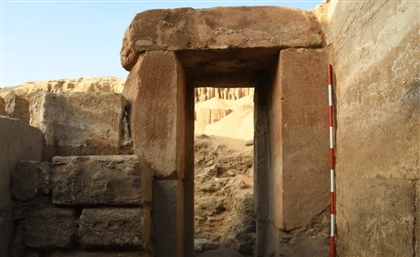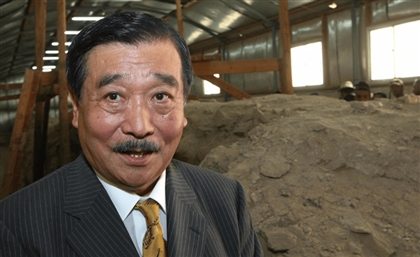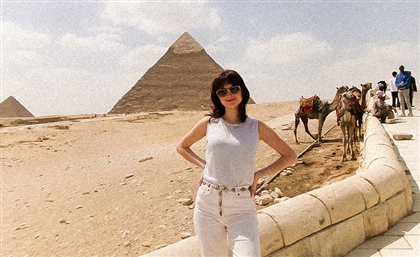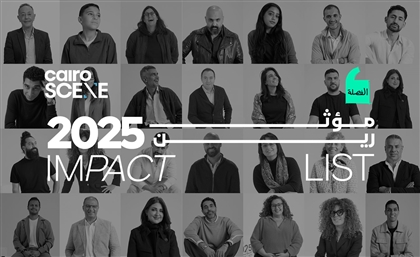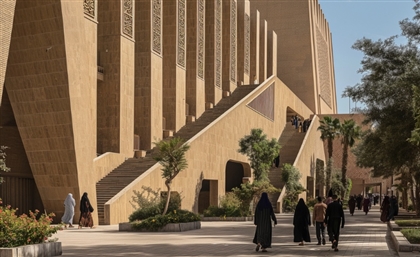The Real Pyramid Scheme: The Colonial Issue at Egyptology’s Core
Egypt’s past was never lost, but the power to interpret it was slowly displaced, archived elsewhere, and returned as spectacle. Reclaiming it now means more than bringing objects home.
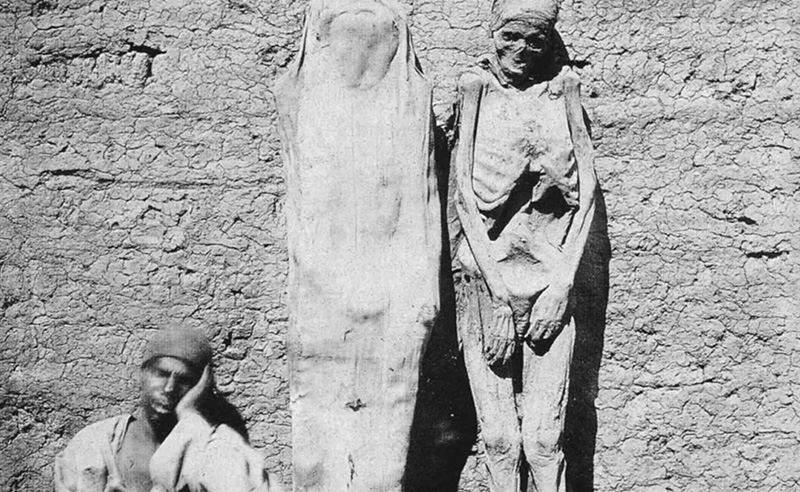
In 2016, two artists walked into Berlin’s Neues Museum with a hacked Xbox Kinect sensor concealed in a scarf. They weren’t tourists. They weren’t researchers. They were there to perform a unique heist.
In front of them stood the bust of Queen Nefertiti: serene, ancient, impossibly elegant. She had been excavated from Amarna, her home in Egypt, in 1912 by German archaeologist Ludwig Borchardt and exported to Germany through deliberate deception. In official documents, Borchardt described her as a painted plaster head of no significant value. Privately, he called her “the most beautiful object ever found.” Germany has refused every request for her return ever since - they've never even allowed a brief loan.
Al-Badri and Nelles lingered in front of the queen, pretending to gawk at her while the Kinect sensor - originally designed for video games - captured thousands of data points from every angle. This modified sensor, rigged with custom software, allowed them to collect a three-dimensional scan of the sculpture, effectively digitising her form without ever touching her.
The artists later released the scan online: a 21-million-polygon model of the bust, open-source and freely downloadable. Anyone in the world could now 3D-print Nefertiti, remix her, replicate her, reclaim her. Soon after, a replica made from the artists’ data was unveiled in Cairo. Nefertiti, displaced for over a century, had returned home - if only in likeness.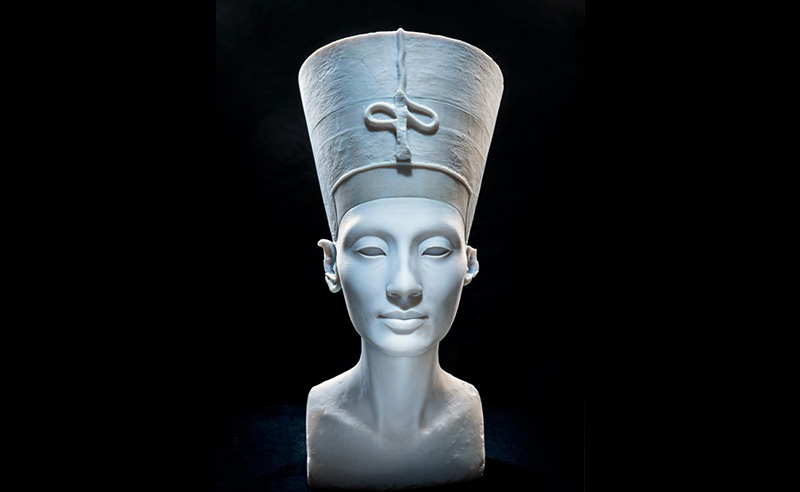
They called their project The Other Nefertiti. It was a counter-archive. A radical gesture aimed at breaking the aura of museum authority and disrupting the fiction of cultural neutrality. A reclamation by simulation. They wanted to activate the artefact, to inspire a critical reassessment of today’s conditions and to overcome the colonial notion of grabbing in Germany. And it provoked precisely the kind of questions that Egyptology, for over two centuries, has avoided: Who owns the past? Who controls its images, its language, its circulation? What is more original, an object in glass behind museum walls, or a copy that breathes back into the culture from which it was extracted?
To speak of decolonisation, then, is not simply to demand the return of artefacts. It is to reclaim the right to interpret, to narrate, to critique. It is to dismantle the systems, academic, bureaucratic, financial, that continue to privilege foreign voices and frameworks. It is to insist that heritage is not a spectacle, nor a commodity, nor a weapon. It is a relationship. "Not through national branding or a single triumphant repatriation, but through democratising knowledge, restoring agency, and building political coalitions,” Monica Hanna tells CairoScene.
As Dr. Monica Hanna, a renowned Egyptian Egyptologist has argued in her paper 'Contesting the Lonely Queen' against the myth of universal museum, the bust is not just removed from place, but from meaning. “The reality of imperialistic museums,” Hanna argues, “is that they permanently store decontextualised things of one culture in a museum of another… The experience of the bust of Nefertiti has always been limited to those who could visit her in her confinement in Berlin, decontextualised from the materiality of her background of discovery in the mudbrick workshop of Tuthmosis… and disconnected from the sensoriality of her Indigenous community.”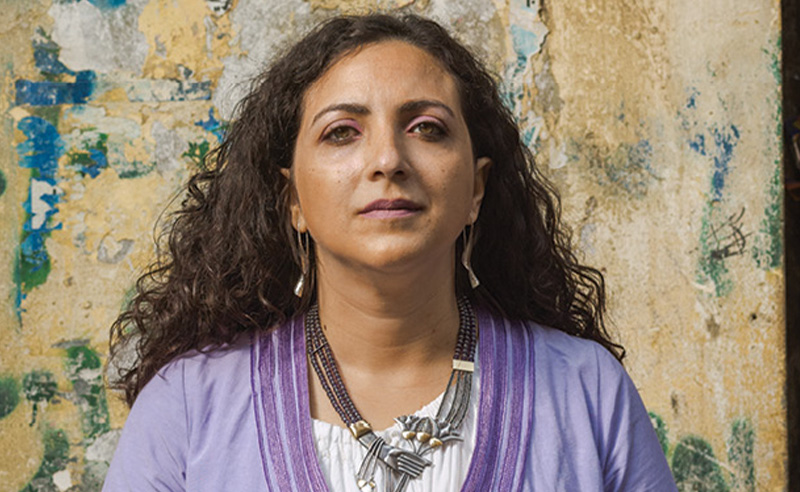
She calls the Neues Museum a heterotopia, a Foucaultian non-place, where a single, highly curated version of the past is staged under the illusion of neutrality. In that dimly lit rotunda, Nefertiti is less a queen than a projection: a European fantasy of ancient Egypt, frozen in plaster, beauty and captivity. The question is not whether Nefertiti belongs to Egypt. It is whether we are ready to acknowledge that she was taken, misrepresented, and used to scaffold Western identity at the expense of her own. And it is the real problem with Egyptology today.
Until she returns home, that story remains unfinished. I often return to one page in 'The Future of Egyptology', the most recent book by Dr. Monica Hanna. In it, she recalls the ransacking of the Mallawi Museum in Minya in August 2013, a moment of chaos and erasure that rarely makes its way into national memory. One teenage boy, she writes, was seen running from the looted site with an artefact in his hands. When Hanna stopped him, he told her plainly that it was fine to take it because, he said, “the museum belongs to the government.”
That sentence has stayed with me for its brazenness, and its clarity. Behind it is not malice, but a quiet, inherited disconnection. A belief that heritage is not ours but theirs, that these statues and stelae and fragments of wall text belong to an apparatus of power, not to the people who live in their shadow. Because it reveals the extent to which so many of us Egyptians, through no fault of their own, have been estranged from the very culture others cross continents to study, a culture often depicted as a lost one but in fact still very alive up to this day. “Many Western scholars audaciously express how Ancient and Modern Egypt are two hermetically sealed entities, where the modern does not identify with the ancient.” Hanna tells CairoScene.
Years of colonial power didn’t just remove objects, they stripped away the tongue and the knowledge. Those who once held meaning, who passed stories through gesture, ritual, or oral memory, were sidelined until the story of ancient Egypt was no longer told by its descendants, but by foreigners first, in French, German, English. By the time Egyptians were invited back into the narrative, it had already been framed, captioned and curated for someone else.
This is not a crisis of patriotism or awareness but the residue of centuries of colonial sediment, of knowledge extracted, names overwritten, meanings translated and retranslated until they no longer land. Egyptology, as a discipline, was not built for Egyptians. It was built on them, around them, and often without them. It catalogued ruins but ignored the living. It preserved history while denying people their relationship to it. So when we speak now of “decolonising” or “decentralising” Egyptology, the question is not whether the field can be reformed. It’s whether it can be reclaimed. Whether Egyptians, not just scholars and officials, but ordinary people, can once again see themselves not as caretakers of foreign interest, but as inheritors of a complex, living past.
In 1798, Napoleon Bonaparte landed in Egypt not only with soldiers, but with scientists. His was not just a military campaign, it was an intellectual invasion. The scholars and savants who accompanied him mapped the Nile, measured temples, copied inscriptions, and compiled what would become 'Description de l’Égypte', a multi-volume monument to European conquest through knowledge.
It marked the birth of modern Egyptology, and the beginning of its dislocation. The Egypt they documented was reframed not as a lived, layered land but as the cradle of Western civilisation, frozen in antiquity, severed from its continuities. I call it mythmaking: an origin story curated for the West, built on the erasure of the present and often-times maniac colonial kitsch.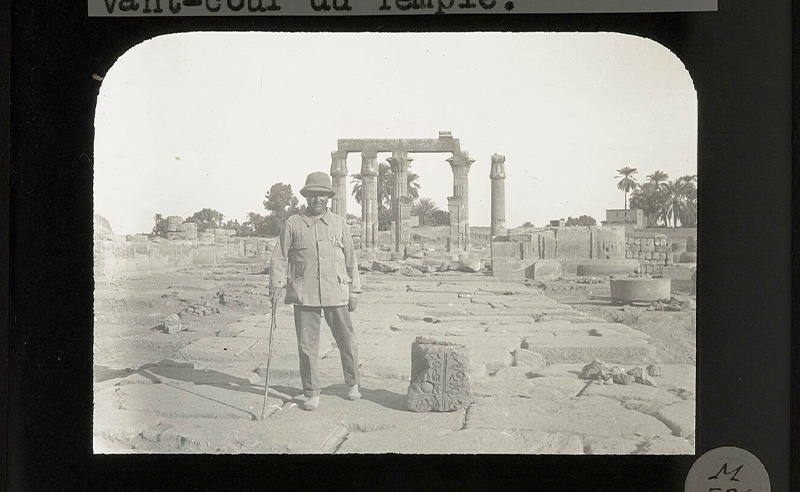
Christian Langer, in his essay for Critical Epistemologies of Global Politics, calls this “epistemic colonisation.” Unlike formal colonialism, which operates through flags and borders, epistemic colonisation exerts its power through knowledge production. It is enacted not by generals, but by scholars and institutions, museums, universities, editorial boards. The archaeologist granted unrestricted access, the foreign mission that dominates excavations, the museum that guards looted artefacts under the pretext of universal heritage.
The story of Egyptology is, at heart, a story of dispossession. While pharaonic monuments are scrubbed, lit,and photographed for glossy brochures, the broader texture of Egypt’s historical identity, oral traditions, and village memoryscapes, the very structures that can be traced back to the ancient Egyptian civilisation, remains underfunded, unarchived and frequently erased. The result is a curated illusion: a country proud of its ancient grandeur, yet estranged from it, all while Joe Rogan and Aaron Rodgers confidently discuss the presence of submarines and helicopters on temple walls.
It’s a form of temporal segregation. Ancient Egypt is treated as a glorious but dead civilisation, valuable only when extracted, classified and displayed. Contemporary Egyptians, in this framework, are not the inheritors of pharaonic legacy but its accidental neighbours. And when Egyptian archaeologists do enter the field, they are too often expected to mimic the tools, citations and tones of Western academia to gain legitimacy. Access is conditional. Voice is conditional.
In recent years, the call to decolonise Egyptology has gained momentum. Conferences now feature panels on inclusivity. Grants are allocated for Egyptian scholars. Partnerships are struck between foreign and local institutions. But how much of this is performance? Austrian archaeologist Uroš Matić, in his 2023 paper 'Postcolonialism as a Reverse Discourse in Egyptology', warns that much of this activity reproduces, rather than dismantles, colonial logic. The discipline, he argues, has adopted postcolonial theory like a costume, borrowing terms like “hybridity,” “entanglement” and “third space” without understanding their origins or implications.
In postcolonial theory, hybridity is a powerful concept. It’s not just about cultural mixing or visual combinations. As theorist Homi Bhabha explains, hybridity is about what happens when the colonised mimic the coloniser, not to become them, but to subtly expose and undermine their authority. It’s a kind of resistance that happens in the cracks - an “in-between” space where power is echoed, exaggerated and sometimes turned against itself.
A true example of postcolonial hybridity in Egyptology might look very different. It could be an Egyptian archaeologist working within a major European museum, using the tools, language and authority of that institution not just to fit in, but to challenge how Egypt’s past is represented, to call out colonial theft and to push for the return of looted artefacts. That’s hybridity as resistance: using the master’s tools to dismantle, or at least rattle, the master’s house.
What Matić warns against is the way Egyptology often borrows postcolonial terms like “hybridity” but strips them of this meaning. The word becomes aesthetic, something about appearance, rather than political. In doing so, the field gives itself the appearance of being critical or decolonial, while continuing to operate within the same old frameworks.
Or consider “entanglement” - a concept introduced by archaeologist Ian Hodder to describe mutual dependencies between people and things. In theory, it offers a way to trace complex histories of interaction. But in practice, it often becomes a euphemism for occupation.
Matić calls this dynamic “reverse discourse”, another Foucauldian term for when the language of liberation is used within the very framework of domination. Postcolonial concepts are deployed not to critique power, but to camouflage it. Reclaiming Egyptology requires more than symbolic gestures, it demands structural transformation across every layer of the field. It begins with reforming excavation labour practices aligned with today’s cost of living, offering transparent briefings about the significance of the work, and crediting local labourers in publications. Beyond the site, it means building democratic infrastructure, funding regional libraries and cultural centres in Upper Egypt and the Delta, translating core Egyptological texts into Arabic, and establishing community heritage councils with decision-making power. Central to this vision is the digitisation and repatriation of archives, and training students in digital curation and storytelling.
Hanna reframes restitution not merely as the return of objects, but as a return of authorship - insisting that the right to interpret Egypt’s past be restored to Egyptians through shared authorship, visible credit and contextualised exhibitions. Finally, she calls for regional political alliances, working alongside nations like Iraq, Greece and Sudan to coordinate diplomatic and legal pressure on European museums, and forming transnational councils to demand accountability and co-create new models of cultural sovereignty.
What would a truly Egyptian Egyptology look like? Perhaps it would begin not with tombs, but with testimonies. Not with gold masks, but with memories. It would recognise that the language of the past still lives, in songs, in crafts, in rituals passed between Egyptian grandmothers and grandchildren. It would be less about possession, and more about care.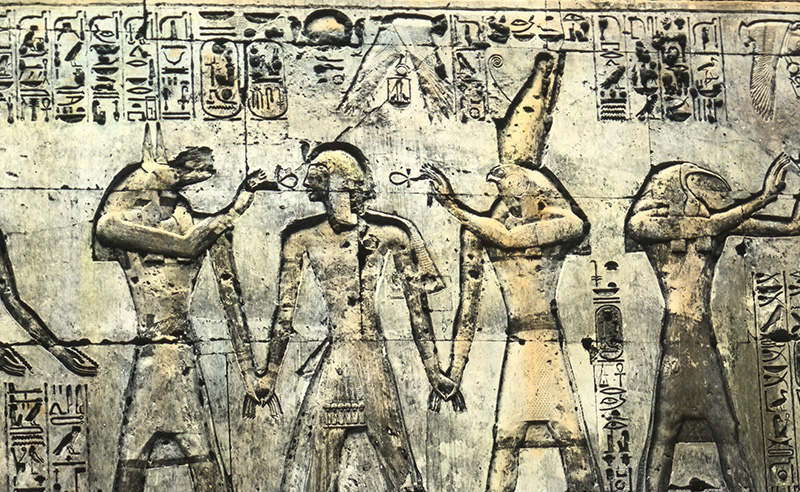
What was taken from us was the authority to remember, to interpret, to feel. And that cannot be returned through loans or replicas. It must be reclaimed, patiently, politically, and with the same quiet insistence that once built this marvellous world.
- Previous Article Egypt's Rail Capacity to Expand With 44 New Machines
- Next Article Six Unexpected Natural Wonders to Explore in Egypt
Trending This Week
-
Dec 27, 2025
-
Dec 23, 2025








